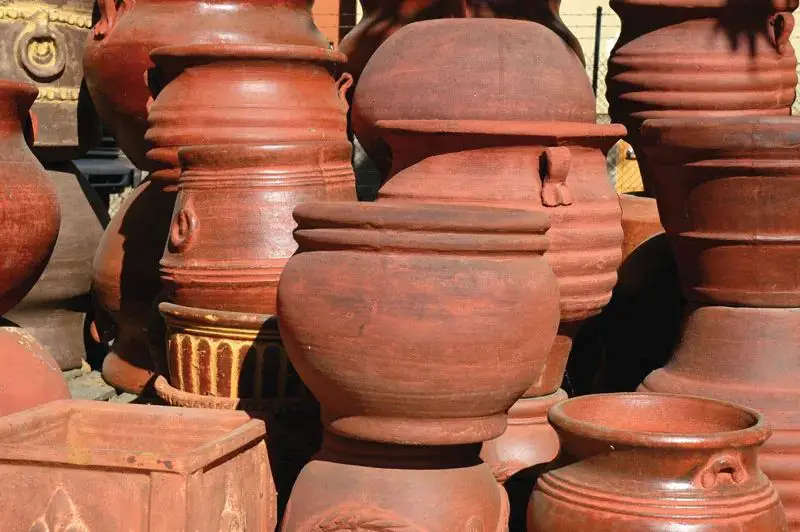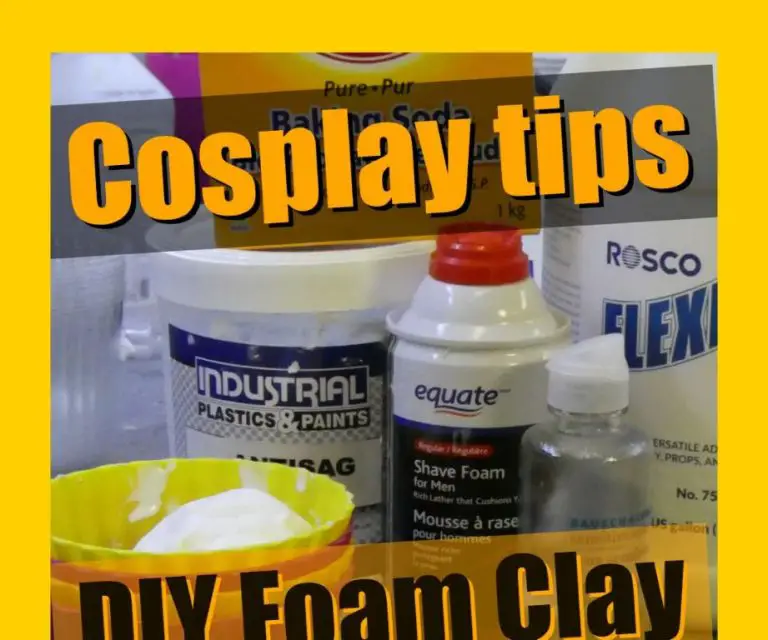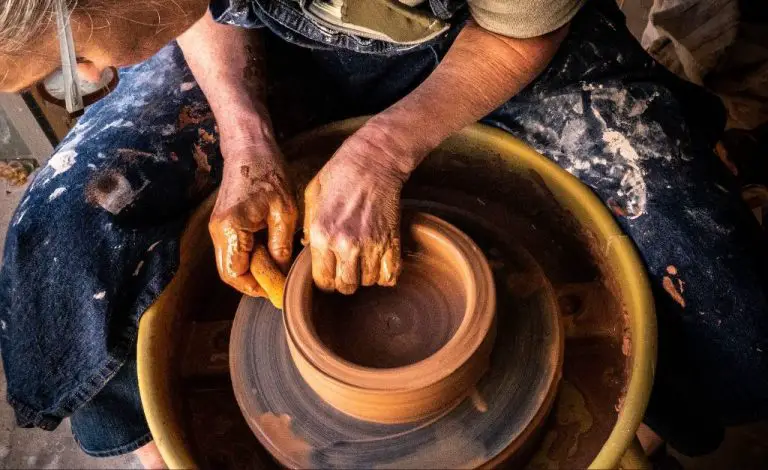Can Any Clay Be Used For Pottery?
Pottery is the art of making vessels and other objects with clay and other ceramic materials, which are then hardened by firing in a kiln. Pottery is one of the oldest human inventions, originating before the Neolithic period, with ceramic objects like figurines and containers being found in the Ice Age. Clay is a versatile material that can be molded, shaped, and transformed into objects both practical and decorative.
There are several types of clays used for pottery, each with their own properties and characteristics:
- Earthenware – A basic clay body fired at lower temperatures. It is porous and coarser compared to other clays.
- Stoneware – Denser and fired at higher temperatures to vitrify or become non-porous. Stoneware is durable and watertight.
- Porcelain – A fine white clay fired at very high temperatures. Porcelain is smooth, translucent, and delicate.
The type of clay impacts the look, feel, and durability of finished pottery pieces. Knowing the distinctions allows potters to select the optimal clay for their needs.
Properties of Clay
Clay has several key properties that determine its suitability for pottery. The most important properties are plasticity, porosity, shrinkage, and durability.
Plasticity refers to a clay’s ability to be shaped and molded without cracking or crumbling. Highly plastic clays, like ball clays, can be stretched and manipulated into intricate forms (The Basics of Pottery Clay). Plasticity is essential for throwing pots on a wheel and handbuilding techniques.
Porosity describes how porous or watertight clay becomes after firing. Low porosity clays, like stoneware and porcelain, become denser and less porous when fired. High porosity clays, like earthenware, retain their porousness after firing. Porosity impacts strength, absorbency, and durability.
Shrinkage refers to the reduction in size as clay dries and fires. All clays shrink to some degree. Higher plasticity clays typically shrink more. Controlling shrinkage is key for achieving proper fit of clay elements.
Durability relates to strength and resistance to wear, chipping, and cracking. Fired clay density greatly affects durability. Generally, higher fired clays are more durable due to lower porosity. Durability is a key factor for functional pottery and sculptural works (Types of Clay for Pottery).
Common Clay Types
There are several common types of clay used in pottery and ceramics. Some of the most popular include:
- Earthenware – This clay fires at lower temperatures, between 1800°F – 2100°F. It’s porous and permeable even when glazed. Earthenware is one of the most commonly used clays due to its ease of use and availability. It’s great for beginners. Common types include terracotta and red clay.
- Stoneware – Stoneware clays are fired between 2100°F – 2300°F. The clay becomes vitrified, non-porous, and waterproof at these high temperatures. It’s commonly used for functional pottery and ceramics like mugs, plates, vases etc. It comes in various colors like grey, brown, buff, and white.
- Porcelain – Porcelain clays fire at very high temperatures, usually between 2300°F – 2400°F. The clay becomes dense, durable, translucent, and white after firing. Porcelain is commonly used for art pottery, tableware, sanitaryware and electrical insulators. It’s more difficult to work with than stoneware or earthenware.
- Terracotta – Terracotta is an orange or red baked earthenware clay. It’s one of the most ancient types of clay used for pottery and sculptures. Unglazed terracotta is porous while the glazed variety provides waterproofing. It’s commonly used for plant pots, tiles, vases etc.

When selecting clay for pottery, it’s important to consider the type of project, the desired characteristics, firing temperature, and skill level.
Sourcing Clay
When getting started with pottery, you have two main options for obtaining clay – gathering it yourself locally or buying it. Gathering your own clay can be rewarding and save money. However, it takes more effort to locate clay sources and determine if the clay is suitable for pottery. Purchasing prepared pottery clay from art stores or online retailers is easier but can get expensive in bulk.
If interested in gathering clay, start by researching locations near you. Clay deposits can often be found near water sources or natural springs. Once a potential spot is located, dig down into the earth to obtain clay samples. Test samples for quality, plasticity, firing characteristics, etc. to assess if usable for your purposes before harvesting large amounts. Always get permission from landowners before removing significant clay from any site.
Buying prepared clay from suppliers ensures known qualities and ingredient mixtures. Look for pottery clay rather than natural clay which hasn’t been processed. Prepared clays are designed for workability and firing. Common pottery clay types like stoneware or earthenware available at craft stores generally provide reliable results for beginners. Though more expensive than gathering, purchased clays offer convenience and consistency.
Preparing Clay
Preparing clay properly before starting any pottery project is an essential first step. Clays straight from the bag or block often contain air pockets and inconsistent moisture levels. Pugging or wedging the clay eliminates air bubbles and ensures even moisture distribution throughout the clay. Here are some key techniques for preparing clay:
Wedging
Wedging involves kneading and working the clay on a flat surface to form it into a rough cone shape. This squeezes out air bubbles and blends the moisture evenly throughout the clay. Typical wedging techniques include the diagonal cut, spiral, and circular wedging methods. Proper wedging leads to fewer cracks and explosions in finished pieces when fired. Source
Slaking
Slaking means soaking hardened clay in water to soften it and make it workable again. Place the dry clay scraps or powdered clay in a bucket and add enough water to fully submerge it. Let it soak overnight until saturated. Then wedge or blend the slaked clay on a wedging table to remove any remaining hard spots or air pockets before using it for projects. Slaking recycles clay scraps into usable clay again.
De-airing
A process called de-airing or degassing uses a vacuum pump to extract air bubbles from soft clay. This ensures clay with minimal trapped air before throwing on the pottery wheel or handbuilding. While not always necessary, degassing helps prevent cracking and bursting in fired pieces, especially for very large works. Source
Working with Clay
There are two main methods for shaping clay into pottery – handbuilding and wheel throwing. Handbuilding involves molding clay by hand into the desired shape without the use of a pottery wheel. This can be done through techniques like pinch pots, coiling, and slab building. Wheel throwing involves centering a ball of clay on a rotating pottery wheel and using your hands to shape it as it spins.
Once clay forms have been created, they must be dried slowly and evenly to avoid cracking. Clay contains water that must evaporate prior to firing. Pieces are often left to air dry for several days or weeks before the final firing process. Firing clay permanently hardens the form through exposing it to high temperatures in a kiln, up to over 2000°F. Clay can only be fired once.
According to one pottery hobbyist, working with clay has some similarities to working with baking doughs like pie crust (source). Both require careful handling to avoid cracking or tearing of the material. Once you understand how clay behaves with moisture and consistency, pottery shaping can feel familiar, much like handling a delicate dough.
Clay Considerations
When choosing a clay for pottery, there are a few key considerations to keep in mind related to the clay’s properties and how it behaves during the pottery process.
First, pay attention to the clay’s shrinkage rate. As clay dries and is fired, it reduces in size. Some clays shrink more than others which can lead to cracking and warping. A clay with too high of a shrinkage rate will be prone to defects. Typically, stoneware clays have lower shrinkage than porcelain clays. According to The Spruce Crafts, ball clays can shrink 10-15% from wet to fired state.
Speaking of cracking and warping, the clay’s plasticity also influences this. Plasticity refers to how easily the clay can be worked and shaped without cracking. More plastic clays are less prone to cracking during throwing and shaping. However, extremely plastic clays can sometimes warp during firing. Finding the right balance is key. The Pottery Wheel states that ball clays are known for their high plasticity.
Consider the clay’s fired color as well. The clay’s natural color transforms during firing. Some clays fire to a bright white, while others end up with earthy red-brown hues. The intended use and visual style of the finished pottery will determine the ideal fired color.
Finally, examine the texture of the raw and fired clay. Some clays have very smooth textures when wet, while others feel coarser or more granular. The texture impacts workability and how details are rendered. The fired texture also varies between rough, sandy surfaces and flawlessly smooth ones. Evaluate clay textures during each step to find the right match.
Best Clays for Beginners
When first getting started with pottery and ceramic arts, it’s best to begin with clays that are easy to work with. Here are some top recommendations for beginner-friendly clays:
Stoneware Clay
Stoneware clays are highly recommended for beginners. They have good plasticity which makes them easy to wedge, roll, and shape. Stoneware fires to a strong finished product and comes in a variety of colors and textures.
Earthenware Clay
Earthenware clays are inexpensive and readily available. They fire at lower temperatures which makes them another good option when starting out. Theirfinished porosity allows glazes to soak in easily.
Porcelain Clay
Although porcelain can be more challenging, many entry-level porcelain clays are formulated to be beginner-friendly. Porcelain’swhite color provides a great canvas for colored glazes and underglazes.
Focus on simple, basic projects at first to learn fundamental techniques. Ask experienced potters for any clays they would recommend based on your local availability.
Advanced Clays
Once you have some experience working with clay and want to challenge yourself, there are some more advanced clay options to explore.
Stoneware is a strong, dense clay that can be used to create pottery that stands up to daily use. It fires to a higher temperature, making it less porous and more durable. Stoneware clays are often formulated to be smooth and plastic for throwing on the potter’s wheel. They come in a range of earthy colors like brown, tan, and grey.
Porcelain is a highly refined, white burning clay. It is smooth, extremely dense, and becomes vitrified and translucent at high kiln temperatures. Porcelain is weaker than stoneware prior to firing, but can create delicate, thin-walled pottery. It requires careful drying and firing to avoid cracking and breaking.
There are also many specialized clays designed for specific techniques, effects, or chemistry requirements. These include raku, horsehair raku, paperclay, and others tailored for salt firing, wood firing, crystalline glazes, or other advanced applications.
With practice and research, advanced clays can help take your pottery to the next level. But don’t forget to have patience and enjoy the process as you develop your skills.
Conclusion
In summary, clay is an incredibly versatile material that has been used for pottery and ceramic arts for thousands of years across many cultures. While not all clay is suitable for pottery, with proper preparation many types can be worked into beautiful and functional vessels and artworks. Factors like plasticity, shrinkage, porosity, color, and workability determine which clays are best for different projects and skill levels. With some knowledge of clay properties and characteristics, both beginning and advanced ceramic artists can find the right types of clay to bring their creative visions to life.
Clay’s abundance in nature, malleability, and ability to be permanently shaped when fired makes it the ideal medium for pottery. Master potters continue to create stunning works by understanding how to select and prepare the best clays. With practice and experimentation, clay can become an accessible and rewarding material for crafters of all levels to work with.
The ancient craft of shaping clay into pottery is still alive today thanks to the unique and versatile properties of this remarkable material. As long as artists have creativity and vision, clay will continue to be transformed into beautiful and functional works to be enjoyed for generations to come.


